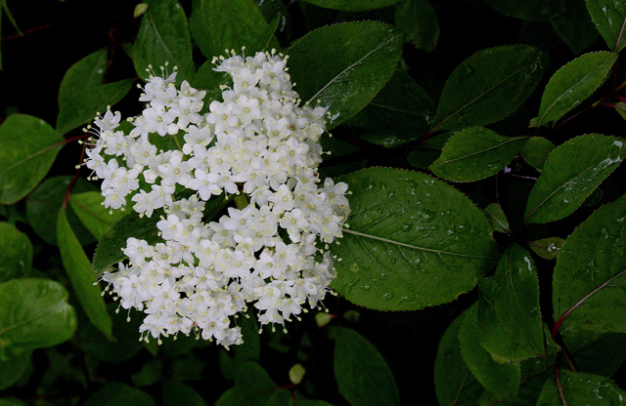
Common Name: Northern Witherod, Withe-rod
Sun to light shade; wet to moderately dry moisture level; grows in gravelly and sandy loams, fine sandy loams, silt loams, peats and mucks; moderately acid to slightly acid pH.
6-10 feet height by 6-10 feet spread; blooms in early summer; creamy white flowers; spherical or oblong blue berry, 3/8 inch diameter, in heavy, drooping clusters in late summer to fall.
Growth Rate: Medium
Maintenance: Infrequent disease and insect problems. All viburnums benefit from a thinning or hard pruning in late winter to remove older stems.
Propagation: Warm stratification of seed for 60 days followed by cold stratification for 90 days at 34-41 degrees F.
Native Region: East Tennessee, especially Unaka Mountains
Deciduous, upright, spreading shrub whose branches become arching with age. Flowers have a disagreeably pungent perfume. Fruit is the most beautiful feature as it changes from green to pink to red to blue before becoming black. Often all colors are present in the same fruiting cluster. Orange-red, dull crimson and purple foliage in fall. An underused shrub that deserves to be more widely planted. More tolerant of wet soil than other viburnums. Occurs naturally in bogs, swamps, dunes, old fields, moist rocky woods, and low, wet, sandy woods. This northern V. nudum var. cassinoides is one of two varieties; the other is southern V. nudum var. nudum. This variety has smaller leaves with a matte gray-green finish. High wildlife value. Attracts birds. Cultivars available.
